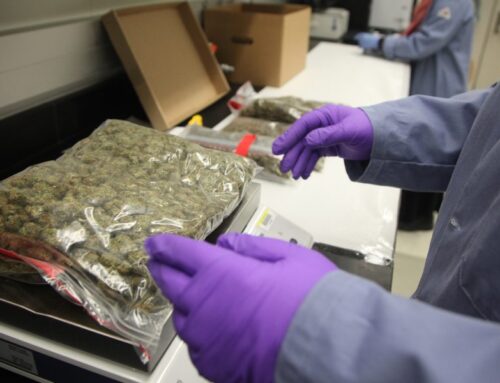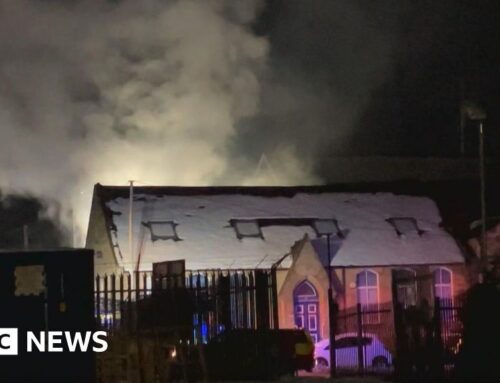Study: Pre-Roman Copper Industry in Timna Valley Had No Polluting Impact on Environment
December 23, 2024
Scientists from Tel Aviv University have conducted geochemical surveys at two smelting camps — dating back to the 10th century BCE, the era of the Biblical Kings David and Solomon — in Timna Valley in the Southern Arabah, southern Israel. They’ve found that the environmental pollution resulting from copper production was minimal and spatially restricted, posing no danger to the region’s inhabitants either in the past or today.

Aerial view of Site 201 north of the center of Timna Valley on the western outskirts of the Wadi Arabah, Israel. Image credit: Yagel et al., doi: 10.1038/s41598-024-80939-5.
“We inspected two major copper production sites in Timna Valley, one from the Iron Age and King Solomon’s era and another nearby that is about 1,500 years older,” said Tel Aviv University’s Professor Erez Ben-Yosef.
“Our study was very extensive. We took hundreds of soil samples from both sites for chemical analyses, creating high-resolution maps of heavy metal presence in the region.”
“We found that pollution levels at the Timna copper mining sites are extremely low and confined to the locations of the ancient smelting furnaces.”
“For instance, the concentration of lead — the primary pollutant in metal industries — drops to less than 200 parts per million just a few meters from the furnace.”
“By comparison, the U.S. Environmental Protection Agency defines industrial areas as safe for workers at 1,200 parts per million and residential areas as safe for children at 200 parts per million.”
The new study contradicts a series of papers published since the 1990s about pollution caused allegedly by the ancient copper industry.
“We demonstrate that this is not true,” Professor Ben-Yosef said.
“Pollution in Timna is very restricted spatially, and it’s likely that only those working directly at the furnace suffered from inhaling toxic fumes, while just a short distance away, the soil is entirely safe.”
“Moreover, the match we found between the spatial distribution of copper and lead concentrations in the soil further indicates that the metals are ‘trapped’ in slag and other industrial waste — which keeps them from leaching into the soil and affecting plants or humans.”
“Our findings align with several recent studies from the Wadi Faynan region in Jordan, which also point to very low levels of pollution.”
“Timna and Faynan are ideal sites for this type of research because they have not been disturbed by modern mining, as happened in Cyprus for example, and thanks to their dry climates the metals in the soil are not washed away.”
“In Faynan, Hebrew University scientists examined 36 skeletons of people who lived at the mining site during the Iron Age, and only three showed any trace of pollution in their teeth. The rest were completely clean. We now present a similar picture for Timna.”
In addition to the geochemical survey, the authors also reviewed existing literature, finding that hypotheses about global pollution during the pre-Roman period lack solid evidence.
“There was a trend in the 1990s, which presented ancient copper production as the first instance of industrial pollution,” said Tel Aviv University’s Dr. Omri Yagel.
“Such statements grab headlines and attract research grants, but they unnecessarily project modern pollution problems onto the past.”
“Moreover, the research literature tends to use the term ‘pollution’ to describe any trace of ancient metallurgical activity, and this has led to the mistaken assumption that metal industries were harmful to humans from their earliest beginnings — which is patently untrue.”
“Even when metal production was large-scale, becoming integral to human civilization, it was the toxic lead industry that caused global pollution, not necessarily other metals.”
“A 1990s study argued that traces of copper found in Greenland ice cores had traveled through the atmosphere from sites like Timna.”
“This claim, however, has not been corroborated by any subsequent study.”
“As researchers confronting the severe environmental challenges of our time, such as climate change, we often tend to search for similar problems in the past or assume that environmental harm has been an inevitable consequence of human activity since the agricultural revolution.”
“However, we must be cautious. While we might label a few pieces of slag on the ground as ‘pollution,’ we should not confuse this localized waste with regional or global environmental pollution.”
This research is described in a paper published November 29 in the journal Scientific Reports.
_____
O. Yagel et al. 2024. Pre-Roman copper industry had no polluting impact on the global environment. Sci Rep 14, 29675; doi: 10.1038/s41598-024-80939-5
Search
RECENT PRESS RELEASES
Related Post



